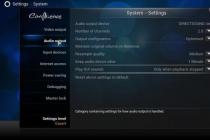Which version flagship Galaxy Does the S8 perform better in benchmarks? Is there a performance difference between the single-chip Galaxy S8 and Galaxy S8 +?
As in previous years, Samsung has released flagship smartphones in two configurations. A version with a proprietary Exynos 8895 chip with an updated graphics accelerator Mali-G71 is supplied to the international market. It is manufactured using a 10nm manufacturing process for higher performance and energy efficiency. A variant with a powerful processor from Qualcomm, also using a 10nm process technology, is being sold in the US and China.
On paper, both chipsets look very similar as they use the same technology. And this is really important, because users around the world cannot choose which version to buy. As tests show, there are still differences.
The Exynos 8895 and Snapdragon 835-based Galaxy S8 smartphones have passed several tests, including Vellamo Metal, a Qualcomm benchmark.

In GFXBench in the T-Rex test, the devices did not have any problems - both showed a result of 60 frames per second. But in Manhattan 3.1, the Exynos 8895 came out slightly ahead with 41 fps compared to the Snapdragon 835 with 35 fps.
In Geekbench, the Exynos 8895 chip scored 2008/6575 points in single-core and multi-core tests, and Snapdragon 835 - 1840/6134 points. Although the gap is not very large, this does not mean that it is not statistically significant. But in Basemark OS II, Vellamo Browser and JetStream JavaScript is better Snapdragon 835 has shown itself. It can be noted that this processor is suitable for those who are interested in high speed of the Internet.
Interestingly, each chipset has its own advantages. While the Snapdragon 835 excels in site navigation, the Exynos 8895 offers better graphics performance.
It is also worth noting that the Exynos 8895 version is more energy efficient than the Snapdragon 835 version.
In theory, the Galaxy S8 and Galaxy S8 + on the Exynos 8895 should show the same results. After all, the devices have the same processors, volume random access memory and built-in storage, display resolution - the difference is in the display size.

However, the Galaxy S8 + turns out to be more productive than its younger brother. The reasons why this is happening remains to be seen.
We have been told for a long time that the Galaxy S8 will be the first smartphone on the Snapdragon 835. And you can't say that they were lying, but the main chipset of the new flagship will not be Snapdragon, but Exynos 8895 - Samsung's own development. Exynos 8895 will overclock the Galaxy S8 for the European market. The S8 with Snapdragon 835 will be sold primarily overseas.
Update from 03/30/2017. Five-Inches has published an overview of key Galaxy characteristics S8. Link to article Also on the site there is a report on the presentation, in which we talk about the main features of the smartphone:.
Main features of Exynos 8895
Specifications Samsung Exynos The 8895 is noticeably different from Snapdragon, but let's start with what they have in common - both chips are manufactured using the 10nm FinFET process technology. This alone guarantees that, in comparison with their predecessors, the speed of the processors will increase, and the energy consumption will decrease.
The official information on the Exynos 8895 says that compared to its predecessor (Exynos 8890), the performance of the chip will increase by 27%, and the power consumption will decrease by 40%.
Snapdragon 835 is also faster than its predecessor (Snapdragon 821), but by 20%. The reduction in energy consumption is slightly less than in the Exynos - 25%. We get that regardless of the chipset, the Galaxy S8 will run faster. Will last longer and run cooler in heavy applications compared to the Galaxy S7.
Exynos 8895 architecture
At first glance, the architecture of Exynos 9-series cores is fundamentally different from the architecture of Snapdragon 835, and the processors are similar only in the number of cores - there are 8. In fact, everything is a little more complicated, and the differences between the processors are not so great.
Exynos 8895: 4x Exynos M2 + 4x Cortex A53.
The 4x Exynos M2 cores are Samsung-customized ARM Cortex A73 cores. The cores are designed to handle complex tasks that require peak processing power from the processor. They are overclocked to 2.5 GHz, but the Galaxy S8 will use two versions of the Exynos M2: overclocked to 2.3 GHz or up to 2.5 GHz. It is the Exynos M2 cores that will determine the speed of the S8 in games and demanding applications.
4 cores Cortex A53 - reference cores with low power consumption for solving simple tasks in the normal mode of using a smartphone. They appeared in processors a few years ago, but are still relevant for everyday tasks. Cortex A53 runs at 1.7 GHz.
In Snapdragon 835, all 8 cores are Qualcomm Kryo 280 CPUs, but they are also divided into two clusters. The cores of the first cluster are built on the ARM Cortex A73 architecture customized by Qualcomm. The second cluster is represented by cores based on the Cortex A53 reference architecture. As you can see, there is more in common between E8895 and SD835 than it might seem at first glance.
The Snapdragon 835 also has the familiar division into powerful cores and cores with low power consumption. The former support clock speeds up to 2.45 GHz. Cores designed to reduce battery drain are limited to 1.9 GHz.
UPD. New publications on Five-Inches:
1. .
2. conducted by Qualcomm.
3. .
4. .
Graphics adapter
Exynos 8895 is paired with the new Mali-G71 graphics accelerator. The new adapter is 60% faster than its predecessor (Mali-T880 MP12, which is in the Galaxy S7). Moreover, the Mali-G71 is also 20% more economical, which will have a positive effect on the Galaxy S8's battery life.
Samsung claims a powerful graphics system will allow you to enjoy all the delights of VR and AR in 4K resolution. Good news for home video lovers too: in Ultra HD resolution, you can record and watch videos at 120 frames per second.
Exynos 8895 vs Snapdragon 835 comparison
Snapdragon 835 graphics accelerator Adreno 540. New graphics 25% faster than its predecessor - Adreno 530. With 4K video encoding, not everything is so smooth - on the Qualcomm website on the official page of the processor it is said that it supports video recording in 4K / 30 fps, and playback - 4K / 60 fps. Not a word is said about the ability to record and watch videos at 120 frames per second.
Samsung Exynos 8895 breakthrough in 4K video encoding @ 120 fps due to improved Vision Processing Unit (VPU) . VPU is used for video recording - it does some of the heavy calculations and offloads the main processor.
Two versions of Exynos 8895: Exynos 8895V and Exynos 8895M
Back to Exynos 8895. The processor will be presented in two configurations - Exynos 8895M and Exynos 8895V. The differences are minimal, they concern only the clock frequency of the fast Exynos M2 cores and the number of graphics adapter cores:
- Exynos 8895M. Clock frequency 4x 2.5 GHz + 4x 1.7 GHz. Graphics adapter Mali-G71 MP20 (20 GPU cores).
- Exynos 8895V. Clock frequency 4x 2.3 GHz + 4x 1.7 GHz. Graphics adapter Mali-G71 MP18 (18 GPU cores).
What modification will the Galaxy S8 get? Will the Exynos 8895 configuration be different in the Galaxy S8 and Galaxy S8 Plus? Not yet known. In principle, it is difficult to imagine a situation in which the power of the "younger" version of the Exynos 8895V will not be enough.
Exynos 8895: camera support
The Exynos 8895 can handle camera resolutions up to 28MP or dual modules up to 28MP + 16MP. All imaginable and inconceivable technical "bells and whistles" of the camera, of course, are also supported. As for video recording in 4K format, we have already said about this - the Ultra HD x 120 frames per second format is officially announced.
Exynos 8895 vs Snapdragon 835 comparison
The Snapdragon 835 supports up to 32MP cameras or up to 16MP dual cameras. 4K video recording is possible, but at 30 fps.
Wireless technology
One of the advantages of the Exynos 8895 and Snapdragon 835 over the competition is the LTE Cat.16 / Cat.13 modem. If you are not very familiar with the categories of modems ... LTE X16 is the latest generation modem: Cat.16 means that the peak download speed is 1 gigabit per second. Cat.13 - upload up to 150 Mbps.
RAM and interfaces
In this part Samsung specifications Exynos 8895 and Snapdragon 835 are identical. Both chips support new interface UFS 2.1 - it speeds up read / write from internal memory and the work of applications. Other interfaces are eMMC 5.1 and SD 3.0.
The LPDDR4x RAM clocked at 1866 MHz also delivers performance gains while reducing power consumption.
Outcomes
| Exynos 8895 | Snapdragon 835 | |
|---|---|---|
| Technical process | 10 nm FinFET | 10 nm FinFET |
| Number of Cores | 8 | 8 |
| Core type | 4x Exynos M2 + 4x Cortex-A53 | 8x Qualcomm Kryo 280 CPU |
| Frequency | 4x 2.5 GHz + 4x 1.7 GHz | 4x 2.45 GHz + 4x 1.9 GHz |
| Graphics accelerator | Mali-G71 MP20 | Adreno 540 |
| Supported memory | LPDDR4x | LPDDR4x 2x 32-bit 1866 MHz |
| Modem | LTE X16. | LTE X16. Download speed up to 1 Gbps Upload speed 150 Mbps |
| Memory interface | UFS 2.1, eMMC 5.1, SD 3.0 | UFS 2.1, eMMC 5.1, SD 3.0 |
| Camera support | up to 28 Mp or dual module up to 28 Mp + 16 Mp | up to 32 Mp or dual module up to 16 Mp + 16 Mp |
| Video recording | 4K UHD @ 120fps | 4K UHD @ 30fps |
| Video playback | 4K UHD @ 120fps | 4K UHD @ 60fps |
We have two the most powerful processor... There are many similarities between them, but there are also enough differences. Anyway, Galaxy S8 will receive a top-end chipset and take the first lines in all benchmarks... Last year, the Exynos 8890 was noticeably faster than the Snapdragon 820. We will find out how it will be this time!
We all already know about the release of the new Snapdragon 835 processor, what to expect from this premium chipset. The Snapdragon 835 was recently tested in the most popular benchmarks and also compared to previous flagship chips.
Compare Snapdragon 835 vs Snapdragon 821 & Exynos 8890
Of course, the comparison results of Snapdragon 835 with Snapdragon 821 and Samsung processor The Exynos 8890 are of the greatest interest to us, as they are the most ubiquitous flagship chips Android smartphones... Test results were obtained from Google Pixel XL (Snapdragon 821) and Samsung Galaxy S7 (Exynos 8890).
We can make fairly accurate guesses about the GPU performance increase on the 835 chip, over the more famous high-performance processors from last year. It is even possible to compare some of the results of the preliminary benchmarks of the Samsung Exynos 8895 powering new Galaxy S8 and S8 +.
Please be aware that all of the following results are not yet realistic.
GeekBench 4 (CPU test)
In the Geekbench 4 multi-core processor test, the new 835 scored (6.461 points), which is a whopping ~ 58% more multi-core performance than the Snapdragon 821 (4.089 points), and an increase over the Exynos 8890 (5.358 points) was ~ 20.58%.
In the single-core test, performance improvements were also noted, but less dramatic. The Snapdragon 835 scored (2.059 points), which is ~ 25.7% more than the Snapdragon 821 (1.638 points) and ~ 10.3% more than the Exynos 8890 (1.866 points).
Some time ago, the new Exynos 8895 chip scored 1.978 points (in a single-core test) and 6.375 (multi-core) in a preliminary Geekbench result. In this case, the powerful 835 is ~ 4% faster in the single-core test and ~ 1.35% faster in the multi-core test. Of course, in the Galaxy S8, the numbers could be slightly better after proper basic optimization procedures, but this is what we are seeing now.
GFXBench (GPU benchmark)
The GFXBench benchmark, especially the GPU benchmark, is very demanding, even for the most modern devices... The Snapdragon 835 scores (1.513 points), ~ 31.79% faster than the Snapdragon 821 (1.148 points) and ~ 67.36% faster than the Exynos 8890 (904 points). This is a somewhat unusual leap in GPU performance between Snapdragon and Samsung SoCs, which lack GPU power over Qualcomm.
The reason for this is Samsung is using ARM Mali GPUs. Graphics power is essential if Samsung wants to parity or outpace processors with Qualcomm's proprietary Adreno GPU.
When it comes to older and less complex GFXBench benchmarks like Manhattan and T-Rex, the Snapdragon 835 still shows its power by mopping the floor with both processors from last year. For the sake of brevity, we will not make individual calculations of the performance increase for each test, but here is a diagram that speaks for itself. Snapdragon 835 with Adreno 540 is just a beast!
AnTuTu (System Check)
AnTuTu is a challenging system test, with a high six-figure score. New processor 835 reached 181.939 points, which is in line with the previous results of 181.434, from December 7, 2016. Thus, the advantages of Qualcomm 835 are ~ 32.5% more than 821 (137.290) and ~ 34% more than Exynos 8890 (135.691).
With consistently positive results, you probably thought that Qualcomm should open a bottle of champagne and forget about all the losers. No! A few days ago, Galxy S8 with Exynos 8895 was featured on AnTuTu with a high score of 205.284 points. Samsung has a 12% performance advantage over Qualcomm's gladiator.
Since these are AnTuTu scores, we tend to believe that Samsung uses (in production) the fastest RAM for storage, rather than the most best processor with graphic processing... But for now, we can only speculate.
Let's summarize
All things considered, the processor Qualcomm Snapdragon 835 is a very significant leap in performance, it will be very fast mobile processor 2017 year. Typical smartphone usage, smart AI algorithms, and 4K video processing are nothing for the new chipset.
As Gadgets News already told, yesterday our colleagues from AnandTech shared the first test, one version of which (USA, China) is equipped with Qualcomm processor Snapdragon 845, and the other (Russia, Europe) - Samsung Exynos 9810. The test impressed with the noticeable superiority of Exynos 9810 over Snapdragon 845 in single-core Geekbench 4. But what about other benchmarks - in particular those that measure the current graphics performance in games? Let's find out if it will clarify this issue. new material AnandTech .
First, let's look at the clock speed of the Exynos 9810. Initially, it was assigned to 2.9 GHz, but in Galaxy smartphone S9 it is reduced to 2.7 GHz. Despite this, the single-core performance of the Exynos 9810 in Geekbench 4 compared to its predecessor, the Exynos 8895, actually doubled.
The following is the performance data for integer and floating point operations per MHz clock speed:


But as one would expect, with the simultaneous operation of several cores, their clock frequency, in order to avoid overheating of the processor, is reduced: for two cores - up to 2314 MHz, for three and four - up to 1794 MHz. Accordingly, the increase in the multi-core speed of the chip is no longer so impressive. Gadgets News brings you a spreadsheet summarizing the results of tests carried out by resources GSMArena and AnandTech.
Let's start by testing the CPU (the percentage of the maximum value in bold is shown in parentheses):
| Model | Galaxy S9 | Galaxy S8 | iPhone 8 | ||
| CPU | Exynos 9810 | Snapdragon 835 | Exynos 8895 | A11 | |
| CPU | 4 x Exynos M3 4 x Cortex A55 |
4 x Kryo 385 4 x Kryo 385 |
4 x Kryo 280 4 x Kryo 280 |
4 x Exynos M3 4 x Cortex A55 |
2 x Monsoon 4 x Mistral |
| GeekBench 4 integer (single core) | 3,734 (81%) | 2,718 (59%) | 2,076 | 2,096 | 4,630 |
| GeekBench 4 floating point (single core) | 3,440 (87%) | 2,041 (52%) | 1,410 | 1,566 | 3,958 |
| GeekBench 4 (single core) | 3,698 | 1,832 | 1,991 | ||
| GeekBench 4 (multi-core) | 8,976 | 6,301 | 6,656 | ||
| AnTuTu 7 | 254,375 | 199,022 | |||
| PCMark Work 2.0 - Web Browsing | 5,253 (66%) | 7,946 | 6,271 | 5,290 | |
| PCMark Work 2.0 - Writing | 4,594 (56%) | 8,137 | 7,131 | 4,797 | |
| PCMark Work 2.0 - Data Manipulation | 5,057 (81%) | 6,211 | 5,404 | 4,043 | |
| PCMark Work 2.0 - Photo Editing | 5,956 (34%) | 17,745 | 11,251 | 7,218 | |
| WebXPRT 2015 - OS WebView | 178 (51%) | 291 (83%) | 194 | 166 | 349 |
| Speedometer 2.0 - OS WebView | 26.70 (30%) | 43.10 (48%) | 29.20 | 22.08 | 88.90 |
It should be noted that the results of the Galaxy S8 with Snapdragon 835 in some tests are noticeably lower than those of other smartphones with the same processor (above all). Therefore, it is likely that the Galaxy S9's performance will be lower than that of the Snapdragon 845 too.
As you can see from the table, the performance of the Galaxy S9 with the Exynos 9810 processor in all others, except Geekbench 4, tests were at a depressingly low level. For example, in PCMark Work 2.0 it fluctuates between 81% and 34% of the performance of the Snapdragon 845 in the reference Qualcomm smartphone. In tests WebXPRT 2015 and Speedometer 2.0 the situation is not much better - 61-62%. Moreover, in some of the tests it even surpassed its successor noticeably.
AnandTech already contacted Samsung about this, and they replied that on a demo Galaxy S9 for MWC exhibitions 2018 a special software which “ possibly not optimized". The company said that it plans to tweak the Exynos 9810 version to a level corresponding to
The following tests evaluated the graphics performance, which is perhaps more relevant than the speed of the CPU, since the bottleneck in the performance of smartphones is primarily games. So, the following results were obtained (off-screen):
| Model | Galaxy S9 | Qualcomm Reference Smartphone | Galaxy S8 | iPhone 8 | |
| CPU | Exynos 9810 | Snapdragon 835 | Exynos 8895 | A11 | |
| GPU | Mali G72 MP18 (572 MHz) |
Adreno 630 | Adreno 540 (670/710 MHz) |
Mali G71 MP20 (546 MHz) |
|
| GFXBench Manhattan 3.1 | 45.70 (75%) | 60.90 | 38.90 | 42.49 | 60.34 |
| GFXBench T-Rex | 143.4 (84%) | 150.8 (88%) | 110.1 | 121.8 | 171.4 |
| GFXBench Car Chase | 25 | 12 | 13 | ||
| Basemark ES 3.1 / Metal | 1,451 | 817 | 1,189 | ||
As you can see, the GPU test results turned out to be no less contradictory - in the rather outdated T-Rex, the Exynos 9810 processor was almost on par with the Snapdragon 845, and in Manhattan 3.1 it was 75% of it. In turn, in the newest and most difficult test GFXBench, Car chase The Exynos 9810 is twice the size of the Snapdragon 835 and Exynos 8895 - despite being credited with a 20% gain in Samsung's press release.
In early January, Qualcomm introduced its Snapdragon processor 835, and on February 23, Samsung officially launched its Exynos 8895 chip. Both new processors are expected to be found in many smartphones coming in 2017.
However, both processors have Common parameters that turn them into close competitors.
Performance characteristics
Compared to their predecessors, both Snapdragon and Exynos have been designed to dramatically improve the performance of the device they are in. Qualcomm is spreading rumors that the 835th processor improves performance by 20% over the 821st version.
On the other hand, Samsung's SoC, dubbed the Exynos 8895, is said to have 27% more powerful than version Exynos 8890.
“With the introduction of the FinFET structure, which controls leakage current very effectively, the 10nm FinFET process has made it possible to increase power by 27% while reducing consumption by 40% compared to the 14nm LPE FinFET process,” says a company spokesman.
Number of Cores
Both processors have eight cores and come with the latest 10nm FinFet process, which is rumored to reduce power consumption by an incredible 40 percent.
GPU
Both GPUs, equipped with graphics configurations, support 4K toys and virtual reality... The Snapdragon 835 is powered by the Adreno 540, which is rumored to have a 20% improvement in 3D rendering over the Snapdragon 821.
“With a Snapdragon processor in your device, you practically blur the boundaries between the real and the virtual world. With advanced technologies designed to deliver a truly immersive visual experience, enhanced sound and intuitive interactions, you will hardly notice the difference between the game world and the real world. The graphics are very believable. 3D sound follows you everywhere. But lag and lag are reduced to almost zero here, which means that you will not be tormented by motion sickness, and your experience will turn into sheer pleasure, ”says Qualcomm.
The Exynos 8895 GPU has also undergone significant modifications over the Exynos 8890 version. The new Exynos SoC boasts GPU Mali-G71 with an impressive 20-core configuration.
Baud rate
Both processors support the LTE standard. The maximum supported downlink download speed is 1Gbps, while the maximum uplink download speed goes up to 150Mbps on both the Exynos 8895 and Snapdragon 835.
No network operator has offered such high speed transferring data on smartphones, but we think fans will be good to know that their device will be able to reach normal speeds if such offers appear on the market in the future.
Camera
Exynos 8895 processor supports dual camera with a 28-megapixel primary and 16-megapixel secondary sensor. For comparison, latest system on a crystal from Qualcomm supports dual cameras with a 16-megapixel sensor.
Video recording and playback
Apparently, the Exynos 8895 took over the Snapdragon 835 in this. The processor from Qualcomm will support 4K video recording at 30 frames / sec, and play it at 60 frames / sec. The Exynos 8895, on the other hand, will be able to record and play 4K video at an astonishing 120 fps.
Other parameters
Both processors will have Extra options that will enable them to perform various tasks.
The single-chip system from Exynos supports motion detection, image registration (register), video tracking and object recognition.
At the same time, the Snapdragon 835 will also feature similar object detection, face recognition and gesture algorithms.
Which processor is the best?
The parameters and functionality tell how similar these processors are. While the Exynos 8895 overtakes the Snapdragon 835 in some cases, there are other situations in which the Snapdragon SoC is ahead.
Both processors are expected to be found in many devices expected to hit the market this year, including the next flagship smartphone Samsung, in the Galaxy S8. Presumably, we will see Snapdragon 835 in the new offer of the company Samsung version for the USA, while in the international version mobile phone we will be able to see the Exynos 8895 chip.














